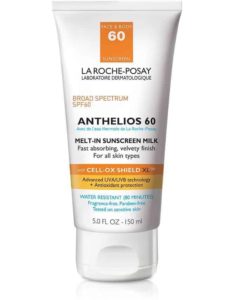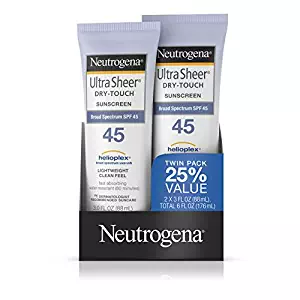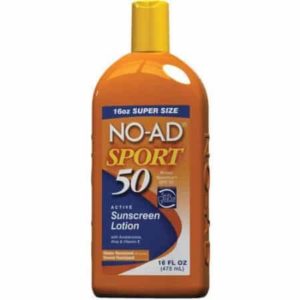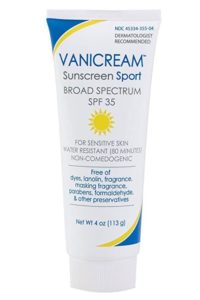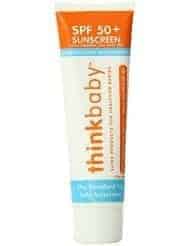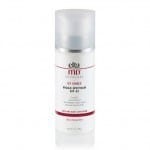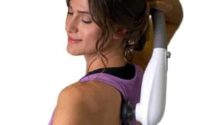6 of the Best Protection Sunscreens
Trying to find the best sunscreen can be a challenge. There are hundreds of products on the market, many of which don’t meet the SPF claims of the manufacturer or they contain a worrying list of chemicals that can be harmful to your health. To help you find an effective and safe sunscreen for you and your family, we have put together a rough guide on some of the best lotions out there and what you need to know about them. Find out what are the best sunscreens to buy and what makes them the best.
Reviews and Recommendations
La Roche-Posay Anthelios 60 Melt-In Sunscreen Milk
Active Ingredients: Avobenzone 3%, Homosalate 10.72%, Octisalate 3.21%, Octocrylene 6%, Oxybenzone 3.86%
Cost: approx. $36 for 5 oz.
EWG Rating:7
Why we picked it
La Roche-Posay Anthelios 60 Melt-In Sunscreen Milk was Consumer Reports’ 2018 highest-rated product. It is more expensive than the other lotions that were tested at $36 for a 5-ounce bottle. If you are willing to spend the money, then this is a great product, especially for users who may have sensitive skin.
It is also one of the top products that are recommended by dermatologists (although manufacturers market heavily to dermatologists). Some of the noted selling points for this lotion are that it has no scent, doesn’t stain clothes, absorbs quickly and goes on clear.
Check the price on Dermstore.com
Neutrogena Ultra Sheer Dry-Touch Sunscreen Line
Cost: approx. $10 for 3 oz
EWG Rating: 7
The Neutrogena Ultra Sheer Dry-Touch Sunscreen Line of sunscreens is an excellent line of products to check out if you want effective sunscreen protection that won’t lead to breakouts. There are many different options in this line, including a stick and a cream for the face that are all highly rated for effectiveness. Even though it has an SPF of 100 (which should generally be avoided), it is still listed as a highly rated product by professional testers because it has solid test results for high UVA and UVB protection. It is a little bit pricey compared to other lower cost options. You can buy it at most grocery, big box, or drug stores that sell sun lotions, so it is easy to find. It also has exceptional customer reviews. Customers like that it absorbs nicely doesn’t feel oily or greasy, and has almost no odor. It also will not run when users sweat. On the negative side, it doesn’t score incredibly well on the EWG ranking, with a toxicity score of 7.
Check the price on Amazon
No-Ad Sport Sunscreen Lotion SPF 50
Cost: approx. $9 for 16 oz
EWG Rating: 3
Why we picked it
No-Ad Sport Sunscreen Lotion SPF 50 is low cost and is easily available sports sunscreen that has excellent consumer reviews. Customers love that it goes on well, soaks in quickly, and doesn’t leave a greasy residue. It also is fragrance and paraben-free. This lotion has a low ranking of 3 on the EWG rating system, so while there are some worrying chemicals in this brand like Oxybenzone, it doesn’t have Retinyl Palmitate.
Professional testing has shown that it lives up to its SPF claims, so you can be assured that you will be well protected while biking, hiking, swimming or sweating heavily.
Check the price on Amazon
Vanicream Sunscreen Sport
Active Ingredients: Zinc Oxide (8%), Octinoxate (7.5%)
EWG Rating: 2
Cost: $13 for 4 oz.
Why we choose this
For those looking for a great physical sports product, an excellent choice is Vanicream Sunscreen Sport with an SPF 35. The active ingredient is Zinc Oxide, so this is a good option for those users who have sensitive skin and need to avoid chemical blockers. Since it hasn’t got any of the chemical blockers, it has an excellent EWG rating of 2, although one of its active ingredients is Octinoxate, which some users will want to avoid.
Most user reviews are very positive about Vanicream, especially those who have sensitive skin. Another thing that people find very favorable is that there is no scent or almost no scent, which is difficult to find in sun products.
This sunscreen is highly recommended by many dermatologists, although many sun protection product manufacturers market heavily to dermatologists, so consumers need to be aware of that.
Check the price on Amazon
Thinkbaby Safe Sunscreen SPF 50+
Active Ingredients: Zinc Oxide
Cost: approx. $15 for 2.9 oz.
EWG Rating: 1
Why we picked it
After being chosen as one of the top-rated sunscreens by the EWG website in 2010 and maintaining a top ranking since then, Thinkbaby Safe SPF 50+ has become one of Amazon’s best selling sun lotions for infants. It continues to perform well in the EWG rating system with a ranking of 1.
Since it contains zinc oxide, it goes on as a white paste and is very thick, which may come as a shock to users who are used to big brand chemical products, but it is easy to apply and blends into the skin well. This company has a few products including Thinkkids(for older kids) and Thinksport (for swimming and more rigorous outdoor activities) that all have the same active ingredients. It isn’t the cheapest lotion on the market at $15 for 2.9 oz., but generally, the physical solutions are more expensive than chemical solutions.
Customer reviews are very favorable for the Thinkbaby lotion. Users particularly love the smell of the product, some describing it with a scent like vanilla and oranges. There are reports of this lotion turning watery, but this may be due to storing conditions or a bad batch of the product.
Check the price on Amazon
EltaMD UV Clear Broad-Spectrum SPF 46, 1.7 oz
Active Ingredients: 9.0% Zinc Oxide, 7.5% Octinoxate
Cost: approx. $30 for 7 oz.
EWG Rating: 2
Why we choose this
A physical/mineral based alternative option if you are looking for a high-end solution is Elta MD UV Shield SPF 45. This product has exceptionally positive user reviews, especially for a physical product. Users love the texture and find that it’s invisible after being rubbed in, which is unusual for a physical lotion. It won’t cause breakouts and doesn’t irritate the eyes or skin according to most reviews. There is also no fragrance. It is another product that is often recommended by dermatologists.
Check the price on Amazon
What are the main types of sunscreen?
There are two general types of sunscreens, physical and chemical ones. Physical (sometimes called mineral based) sunblock uses physical UV filters like Zinc Oxide or Titanium Dioxide to deflect or block the sun, while chemical lotions use chemical UV filters that work by absorbing the sun’s rays.
There is a fascinating battle between the two types of sunscreens, mainly due to a hugely popular and influential website that is put together by the Environmental Working Group (EWG). The EWG has analyzed 1700 different products and given them a ranking based on their toxicity. Almost all of the chemical based products (Coppertone, Banana Boat, Neutrogena type brands) that dominate the market, pretty much universally rank horribly on the EWG’s Guide with high levels of toxicity. The brands that do well on the EWG site are virtually all physical/ mineral based. Conversely, if you look at another hugely influential professional testing site, Consumer Reports, almost all of their top recommendations are chemical based products and they are very dismissive of the physical/mineral based lotions because they have found through their product testing that they don’t provide the type of UVA and UVB coverage that you need to stay safe in the sun.
Which should you choose: Chemical (Big Brand) or Physical (Natural)?
To decide whether you should get a physical or a chemical based product is trying to figure out which is the lesser of the two evils. Are you more worried about exposure to chemicals like Oxybenzone that can disrupt the hormone system or Retinyl palmitate that may lead to cancer, that are active ingredients in most chemical sunscreens? Or are you more concerned with not having adequate coverage from UVA and UVB rays that can lead to melanoma? (Consumer Reports found that many of the physical sunscreens did not have the SPF that they claimed to have) Some other points to consider:
- Chemical sunscreens are generally cheaper and apply clear, while mineral based solutions are more expensive and leave a white coating on the skin. You can buy mineral based products that use clear zinc or nanoparticle sized zinc or titanium. However, these should be avoided as some experts are concerned about the health effects of these type of compounds.
- Mineral sunscreens are less likely than those that contain chemicals (such as avobenzone) to irritate skin or cause allergic reactions.
- In professional testing “natural” or mineral sunscreens have tended to perform worse than those that have active chemical ingredients, such as avobenzone.
Regardless of which type of product you choose, skin cancer is the most common cancer in the U.S., and the benefits of sunscreens far outweigh potential risks from their ingredients, so you should at least wear some sunscreen.
What you need to know when buying
- Avoid Spray products. Spray sunblocks are very convenient and consumers love them. However there are two big problems with them. One problem is that they can be inhaled which can cause lung irritations, and titanium dioxide is a possible carcinogen if inhaled. The second problem is that they don’t cover peoples skin entirely and it is possible to miss spots when applying it. The FDA is currently studying the safety of spray sunscreens.
- Avoid SPF values above 50+ Most consumers assume that the higher SPF you buy, the more protection you will have; this is not the case. The difference in protection between an SPF 50 and an SPF 100 is very small. It also doesn’t mean that you are getting double the amount of protection in SPF 100 vs. SPF 50. SPF only refers to UVB rays, not UVA, so some customers may have a false sense of security with how much protection they are actually getting and how long they can stay in the sun without reapplying the lotion.
- Make sure you use enough lotion. Recent studies have shown that people are applying only 25% of the amount of sunscreen that they should be. It should also be applied 30 minutes before going out in the sun and reapplied every two hours or after you’ve been sweating or swimming.
- You don’t need to buy a unique formula for your kids. The FDA makes no distinction between kids and adults products.
- Only buy products that have broad-spectrum protection. This means that the sunblock protects against both UVA and UVB rays. Both types can be equally damaging to your health, so you need to guard against both types.
- Skin Irritation If you have sensitive skin that is prone to breakouts or skin irritation, you will probably want to consider a physical solution, since chemical UV filters can be more irritating to sensitive skin.
- Physical sunblocks often leave a white cast or streaks when applied and don’t offer as much UVA protection compared to chemical solutions.
- Physical solutions are also a bit thicker, so they may be more difficult to apply.
The Bottom Line
Unfortunately, buying the best sun protection for your family isn’t as easy as it should be, but companies are stepping up and trying to put safer ingredients in their products. With the help of websites like EWG, consumers are better able to educate themselves about the safety of different products on the market and find what might be best for their family. There is a lot of room for improvement for sun safety products, and hopefully, in a few years, there will be effective natural products that won’t include harmful chemicals that will offer excellent UVA and UVB protection.
- The Best Uniform Pants for Girls - 25 August 2020
- The Best Uniform Pants for Boys - 24 August 2020
- The Best Uniform Shirts for Girls - 20 August 2020

